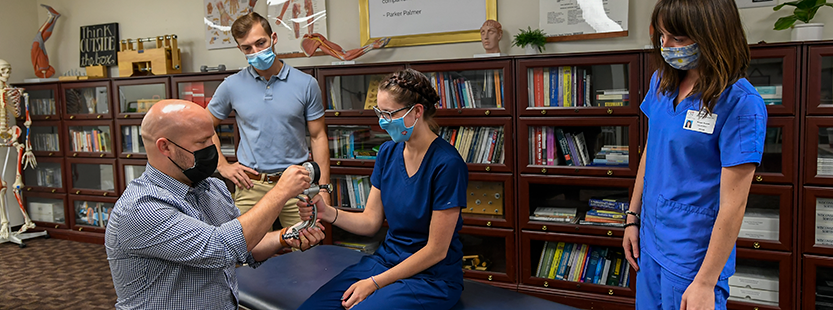WHAT IS FIELDWORK?
LEVEL I FIELDWORK
"The AOTA Standards describe the goal of Level I Fieldwork "to introduce students to the fieldwork experience, and develop a basic comfort level with an understanding of the needs of clients." Level I Fieldwork is not intended to develop independent performance, but to "include experiences designed to enrich didactic coursework through directed observation and participation in selected aspects of the occupational therapy process."
Services may be provided to a variety of populations through a variety of settings. Experiences may include those directly related to occupational therapy, as well as other situations to enhance an understanding of the developmental stages, tasks, and roles of individuals throughout the life span. Day care centers, schools, neighborhood centers, hospice, homeless shelters, community mental health centers, and therapeutic activity or work centers are among the many possible sites. Level I Fieldwork may also include services management and administrative experiences in occupational therapy settings, community agencies, or environmental analysis experiences. Populations may include disabled or well populations; age-specific or diagnosis-specific clients.
Qualified personnel for supervision of Level I Fieldwork may include, but are not limited to, academic or fieldwork educators, occupational therapy practitioners initially certified nationally, psychologists, physician assistants, teachers, social workers, nurses, physical therapists, social workers, etc. The supervisors must be knowledgeable about occupational therapy and cognizant of the goals and objectives of the Level I Fieldwork experience." (AOTA, 2020)
LEVEL II FIELDWORK
While working with persons having various levels of psychosocial, sensorimotor and cognitive performance components, students have opportunities for synthesis, the integration and application of knowledge gained throughout their educational experiences which include general education/liberal arts courses as well as the sequence of occupational therapy coursework. Students will examine the interplay among occupational performance areas, components, and contexts; develop and expand a repertoire of occupational therapy treatment interventions; and employ clinical reasoning and reflective practice skills. Fieldwork A, a Level II internship of at least eight weeks (full-time) in duration, must vary from Fieldwork B to reflect a difference in ages across the lifespan of persons requiring occupational therapy services, in the setting with regard to chronic conditions (long-term versus short-term), and in facility type (institutional versus community-based).
WHO ARE FIELDWORK EDUCATORS?
As a clinical fieldwork educator, you are an important part of the collaborative process of student education. In the clinic environments, students can build on previous levels of knowledge and coursework through practical, hands-on application. The experience you facilitate in the clinical environment develop the intellectual curiosity, creativity, clinical reasoning and reflective practices essential to occupational therapy professionals. We (Faculty) are partners in teaching students about the holistic nature of occupational therapy, where we engage the whole person, body, mind and emotions through client-centered, meaningful and occupation-based treatments and outcomes.
FIELDWORK EDUCATOR RESOURCES
AOTA: Fieldwork Educators Certificate Workshop
Tips on Becoming a Great OT Fieldwork Clinical Instructor
WHO IS THE ACADEMIC FIELDWORK COORDINATOR?
The Academic Fieldwork Coordinator is the university appointed faculty member who oversees overall fieldwork experiences. She is required to ensure the university's OTA program is adhering to state and national accrediting bodies rules and regulations, establish and ensure professional relationships with fieldwork facilities, and act as a liaison between students and fieldwork educators. The University of Southern Indiana's Academic Fieldwork Coordinator is Jana Pace, COTA.
